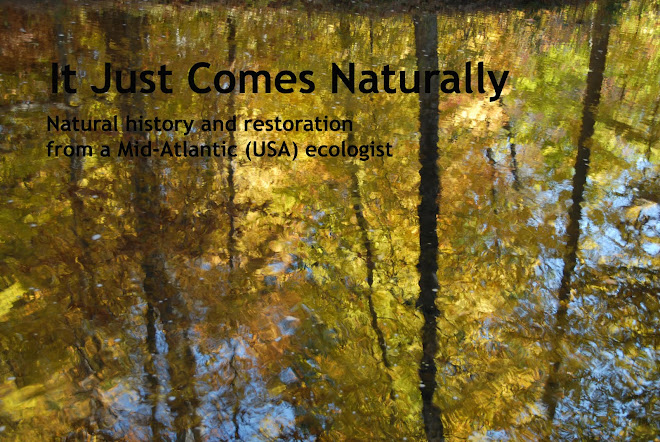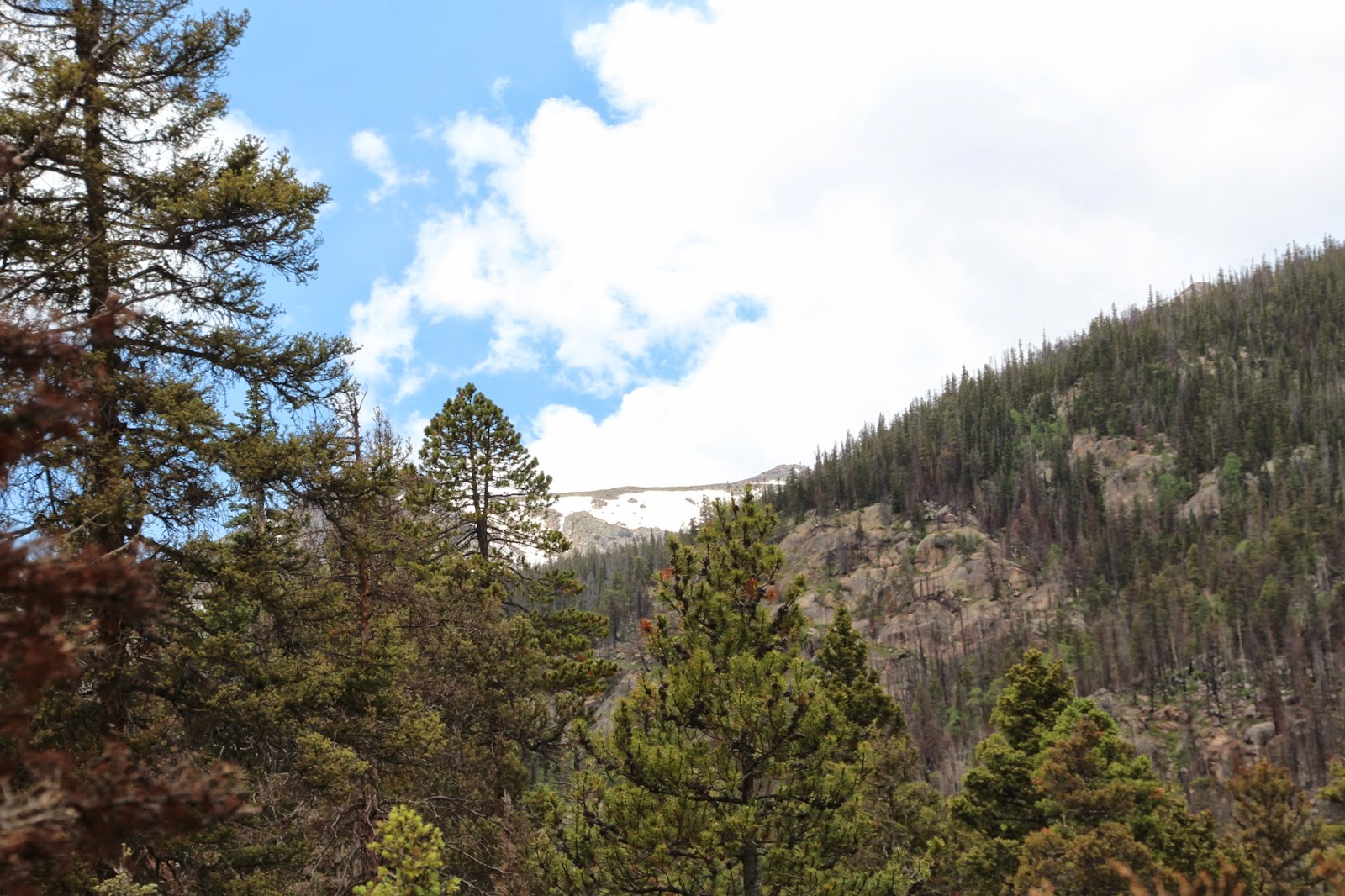 |
| Striped skunk (Mephitis mephitis) |
 |
| Groundhog or Woodchuck (Marmota monax) |
While I was waiting for the police to arrive, a visitor drove into the parking lot with his passenger side window open. His Australian shepherd's head stuck out of the window. The driver slowed when he saw the groundhog and he closed the passenger side window. The driver and I spoke briefly about the sick groundhog, and I mentioned that the police were en route to euthanize the animal. The visitor and his dog drove out of the parking lot and left the preserve.
The police took a long time to arrive. I know that a sick groundhog is not on par with a bank robbery, but our preserve is located less than 10 minutes from the police station, so I expected the officer's arrival at any minute. Meanwhile, I followed the groundhog so that (1) I would know where it was when the officer arrived and (2) I could warn people to steer clear of the animal. All the while, mosquitoes feasted on my bare legs.
About 30 minutes after I called the police, the driver with the dog drove back into the parking lot. I reiterated to the driver that the police were on their way and that I expected them very shortly. The driver then parked his car.
I should mention that, although we don't allow dogs in most parts of our preserve, there are places where dogs on leashes are permitted and it is possible to walk from our parking lot on lightly-traveled public roads to get to the portion of the preserve where dog walking is permissible. Furthermore, there is a 30-acre open field across the street from our headquarters where people routinely walk and train their dogs, and dog owners often park in our lot and walk over to this field.
So, when the driver with the dog parked his car and opened the door to allow his dog out, I wasn't surprised. However, instead of walking toward the parking lot exit or toward the open field across the street, the driver and his dog (which was not leashed) began walking toward me and the groundhog. At first, I couldn't figure out what the guy was doing, then I was momentarily stunned as he and his dog continued to approach me. After a few seconds, I said to him, "You know, sir, dogs are not allowed on this property, and dogs must be leashed when you walk where dogs are allowed." He replied, "Oh, okay," as he continued to walk toward me. Just at that moment, the dog spotted the groundhog and tore off, hell bent for leather. Also at that very moment, the police arrived in the driveway.
As you might imagine, pandemonium ensued. The hapless and utterly disoriented groundhog attempted to escape by running under a car, pursued by the dog. The dog owner kept screaming, "Misty! Get away from there! Get away from there!" all to no avail whatsoever. This dog had its quarry and it was not going to give it up. Eventually, Misty grabbed the groundhog and shook it, but didn't kill it. The owner finally got physical control over Misty, loaded her in the car and sped out of the parking lot. The police officer, incredulous after watching the whole scene, shot the groundhog with his pistol.
As I expected (and hoped), the officer told me that he would have to take the groundhog in for testing to determine if it was rabid. I asked the officer to let me know if the test came back positive. (There was a confirmed rabid bat in our neighborhood two weeks ago.)
For Misty's sake, I certainly hope that she had been vaccinated for rabies. If not, and if the groundhog was rabid, she almost certainly will contract the disease. I had never seen this irresponsible dog owner before - he wasn't one of our "regulars" - so I can't contact him if the groundhog tests positive. A thoroughly upsetting and all around unpleasant experience.






















































